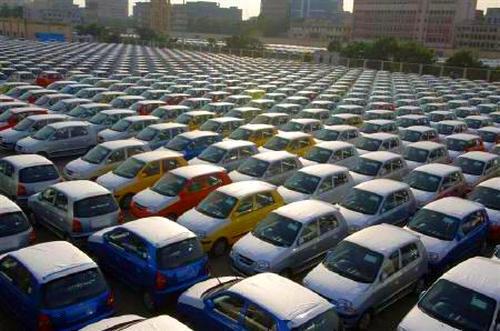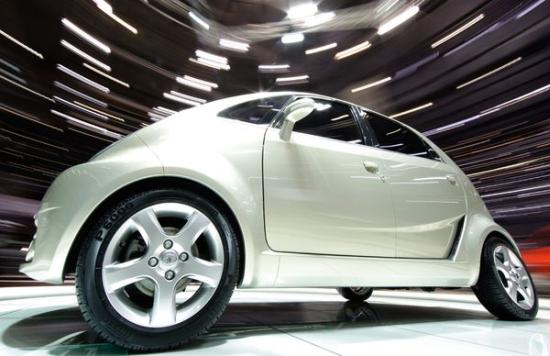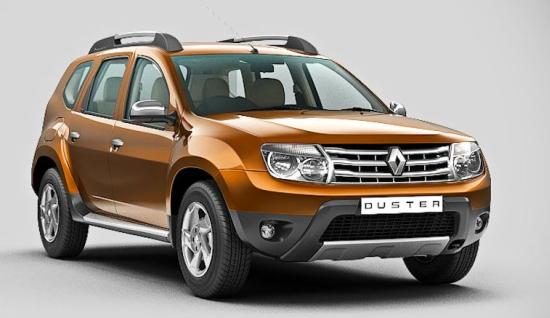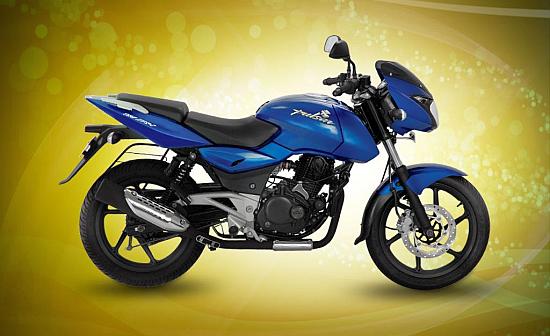Photographs: Babu/Reuters Bhupesh Bhandari in New Delhi
The Indian automobile market has become truly globalised. You have Japanese, Korean, European and American companies jostling for space.
The Chinese too are keen to enter the market, but they have not made any headway so far. But that could change in the days to come.
Markets abroad are close to saturation, and India, it is expected, will continue to grow at a fast clip for many more years to come. So, every automobile maker worth its ignition key wants a piece of the action. The current slowdown may be just a blip.
In cars, the Indian buyer's preferences (small cars, diesel engines) might be radically different from those of the rest of the world, but he is simply too important to be ignored.
In two-wheelers, India is the second largest market in the world after China. The Japanese powerhouses - Honda, Suzuki and Yamaha - have all ended their partnerships with local companies formed in the 1980s and the battle lines have been drawn afresh.
So what's left in it for Indian automobile makers? Is the market headed the videshi way?
The Society of Indian Automobile Manufacturers, or SIAM, publishes sales numbers for each month.
...
Are foreign automakers beating Indian on their turf?
Image: In passenger car segment, Indian cos had a share of 13.41 per cent in Apr-Dec 2011-12, which fell to 11.59 per cent in Apr-Dec 2012-13.Photographs: Valentin Flauraud/Reuters
These are sales from companies to their dealers, not sales from dealers to buyers, but give a good idea of what's happening in the market.
Let's look at passenger vehicles first. SIAM splits this segment into three sub-categories: passenger cars, utility vehicles and vans.
In passenger cars, which account for almost two-thirds of passenger vehicle sales in the country, Indian companies (Hindustan Motors, Mahindra & Mahindra and Tata Motors) had a share of 13.41 per cent in April-December 2011-12, which fell to 11.59 per cent in April-December 2012-13.
This is the most competitive of the three sub-categories, the real test of success in India. That's why car makers reserve their best for it. Some even go for strategic pricing - taking losses in the short run to establish the brand.
No surprise, Indians seem to be losing ground, though one of them (Tata Motors) produces the cheapest car in the world (the Nano).
In utility vehicles, Indians dominate. The five home-grown companies (Force Motors, Hindustan Motors, International Cars & Motors, Mahindra & Mahindra and Tata Motors) had 71.29 per cent of the market in April-December 2011-12, which fell to 54.85 per cent in April-December 2012-13.
...
Are foreign automakers beating Indian on their turf?
Image: Renault has priced its Duster SUV competitively.Photographs: Courtesy, Renault
So long as the sub-category was small, foreign-owned car makers were happy to feed it through imports of completely built units, paying high import duties.
As volumes begin to rise (utility vehicle sales are growing at almost 50 per cent per month), they have started to manufacture them locally. That's why Renault has priced its Duster SUV competitively. Ford is going to up the ante with its Ecosport.
As competition heats up, Indians are bound to lose market share further. In the third sub-category, vans, Indians (Force Motors, Mahindra & Mahindra and Tata Motors) have gained market share from 37.16 per cent in April-December 2011-12 to 51.64 per cent in April-December 2012-13.
Their gain has been the loss of the only foreign player in the van market, Maruti Suzuki.
The second category is commercial vehicles. It has two sub-categories: medium and heavy, and light.
In medium and heavy passenger vehicles, the share of Indian firms (Ashok Leyland, Mahindra & Mahindra and Tata Motors) was 82.27 per cent in April-December 2011-12, which fell to 78.17 per cent in April-December 2012-13.
In medium and heavy goods carriers, too, the share of Indian firms (Ashok Leyland, Asia Motor Works and Tata Motors) fell slightly from 85.98 per cent in 2011-12 to 83.23 per cent in April-December 2012-13.
...
Are foreign automakers beating Indian on their turf?
Image: Photo of Tata Ace Zip mini-truck. In light commercial vehicles, Indians have increased market share.Photographs: Courtesy, Tata Motors
In light commercial vehicles, Indians have increased market share during the period: in passenger carriers (Ashok Leyland, Force Motors, Mahindra & Mahindra and Tata Motors) from 77.78 per cent to 78.84 per cent, and in goods carriers (Ashok Leyland, Force Motors, Hindustan Motors, Mahindra & Mahindra and Tata Motors) from 93.67 per cent to 97.11 per cent.
That's because Indians have developed special skills in small trucks and buses. Tata Motors' Ace is a shining example of that.
In the next category, of three-wheelers, the picture is mixed. In the passenger carrier category, Indians have the upper hand.
Six Indian producers (Atul Auto, Bajaj Auto, Force Motors, Mahindra & Mahindra, state-owned Scooters India and TVS Motor Company) accounted for 68.3 per cent of total sales in April-December 2011-12, which increased further to 69.54 per cent in April-December 2012-13.
The only foreign company in this category is Piaggio Vehicles.
...
Are foreign automakers beating Indian on their turf?
Image: Bajaj Pulsar 180 DTS-i. In two-wheeler segment, Indians have lost market share to their Japanese rivals.Photographs: Courtesy, Bajaj Auto
But in goods carriers, the share of Indian companies (Atul Auto, Bajaj Auto, Mahindra & Mahindra and Scooters India) was 44.25 per cent in April-December 2011-12 and 46.96 per cent in April-December 2012-13.
The rest of the market is with Piaggio. It is worth noting that the goods carrier category is almost 60 per cent of the three-wheeler market.
In two-wheelers, numerically the largest category, Indians have lost market share to their Japanese rivals.
In scooters and scooterettes, Indians (Hero MotoCorp, Mahindra Two Wheelers and TVS Motor Company) have slipped from 42.87 per cent in April-December 2011-12 to 37.1 per cent in April-December 2012-13.
In motorcycles and step-throughs, local producers (Bajaj Auto, Hero MotoCorp, Royal Enfield and TVS Motor Company) have seen their share fall from 88.57 per cent in April-December 2011-12 to 84.62 per cent in April-December 2012-13.
The volumes lost by Indians during this period have almost exclusively been gained by Honda Motorcycle and Scooters.
In mopeds, which are low on technology, the entire market is with one Indian producer, TVS Motor Company.







article